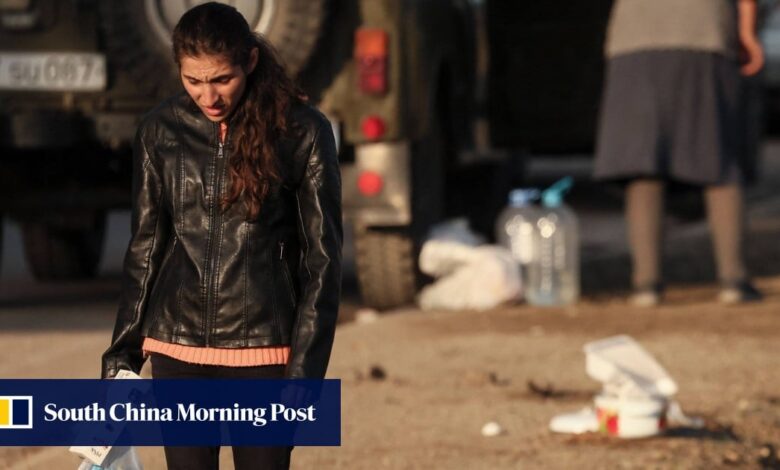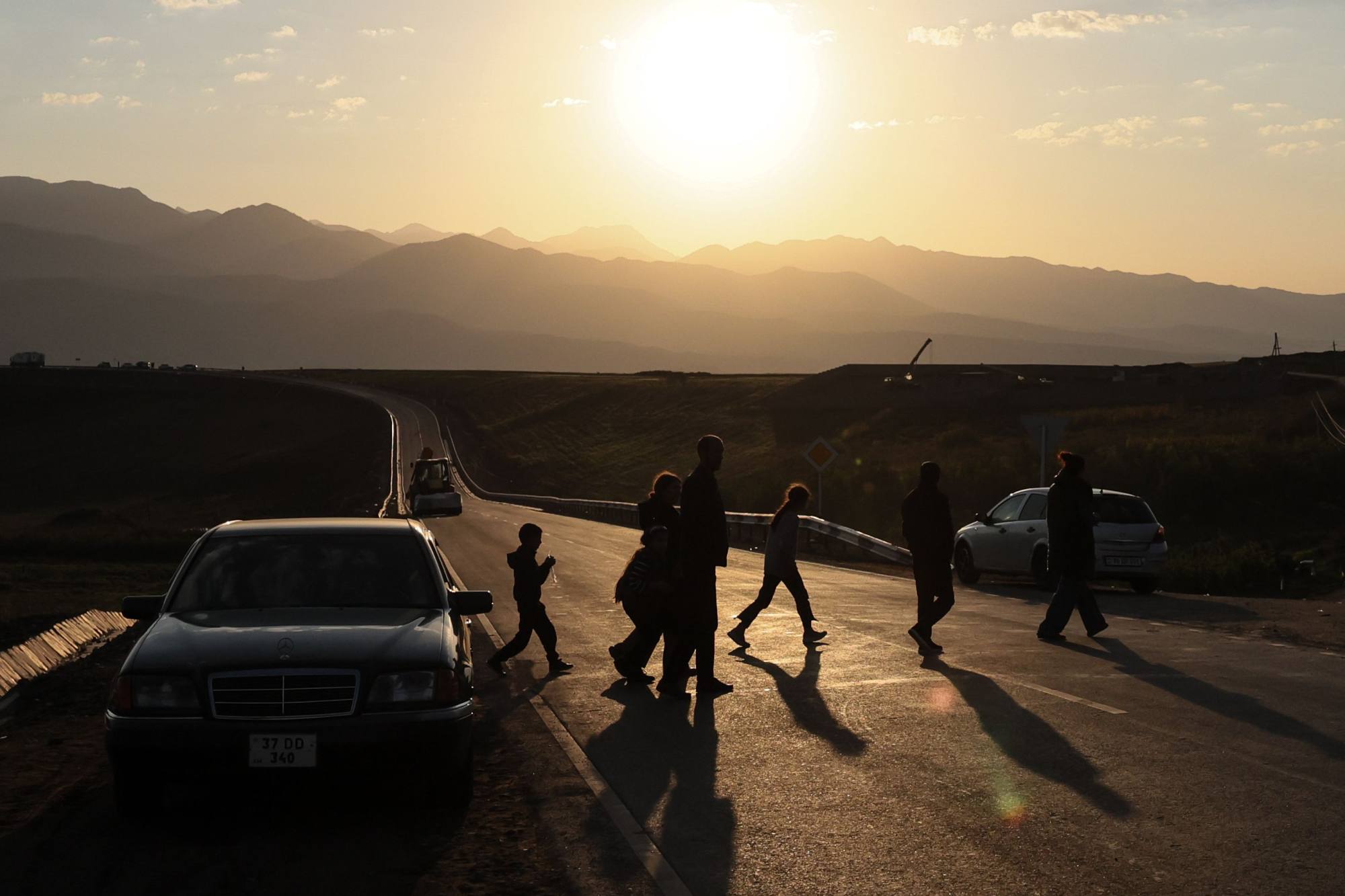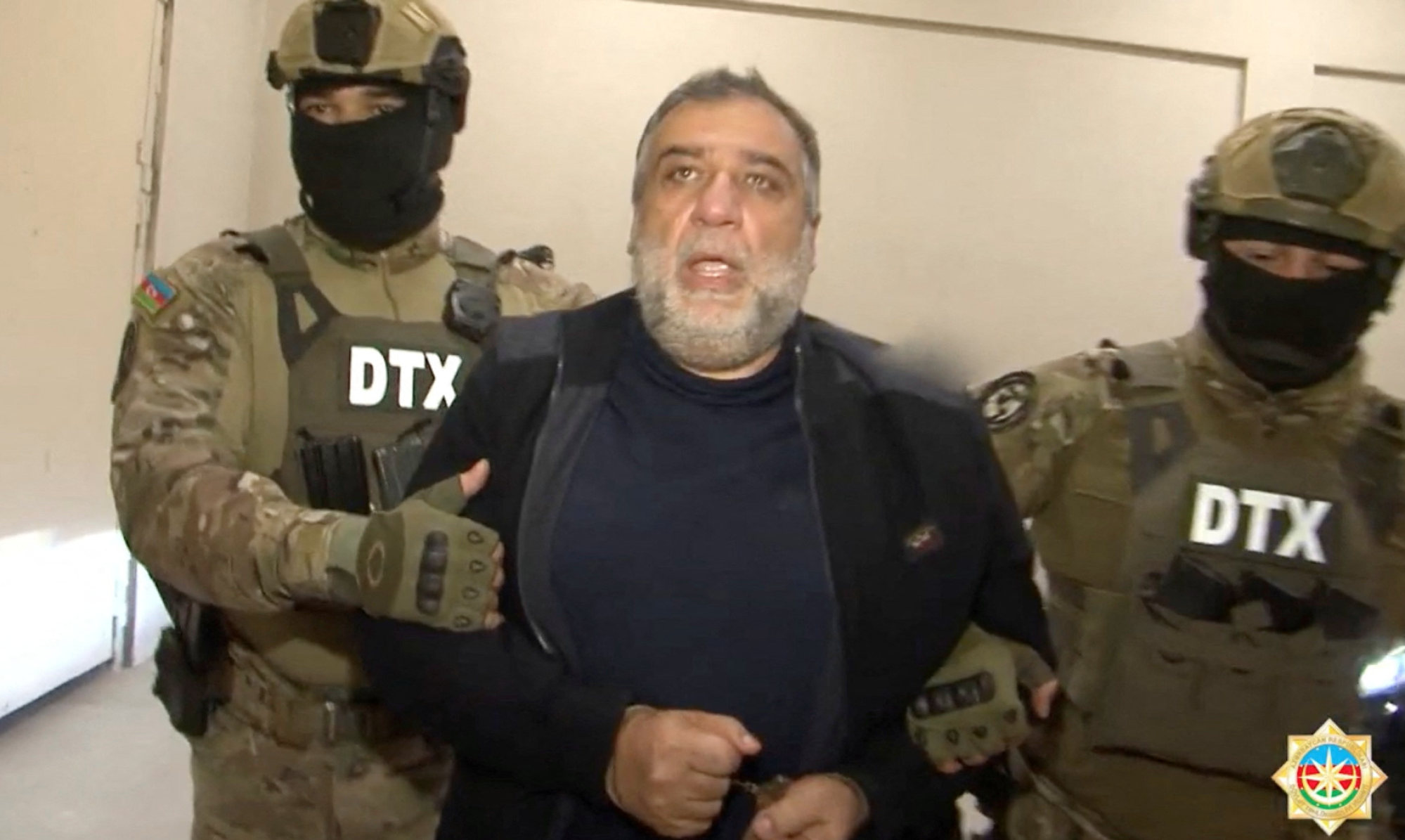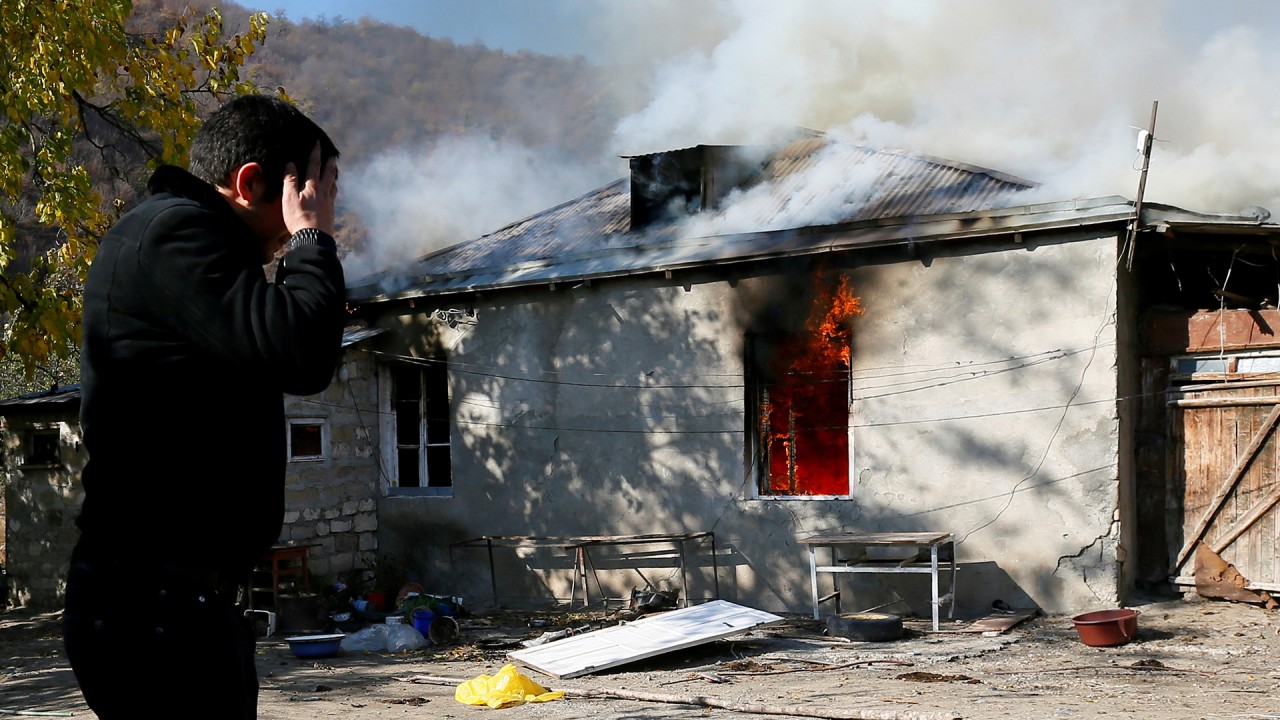Nagorno-Karabakh to dissolve breakaway government in surrender to Azerbaijan, ending ethnic Armenians independence dream

[ad_1]
Baku’s lightning offensive ended with a September 20 truce in the which the rebels pledged to disarm and enter “reintegration” talks.

Two rounds of talks were held as Azerbaijani forces methodically worked with Russian peacekeepers to collect separatist weapons silos and enter towns that had remained outside Baku’s control since the sides first fought over the region in the 1990s.
Azerbaijani forces have now approached the edge of Stepanakert – an emptying rebel stronghold where separatist leader Samvel Shakhramanyan issued his decree.
“Dissolve all state institutions and organisations under their departmental subordination by January 1, 2024, and the Republic of Nagorno-Karabakh (Artsakh) ceases to exist,” said the decree.
“The population of Nagorno-Karabakh, including those located outside the republic, after the entry into force of this Decree, familiarise themselves with the conditions of reintegration presented by the Republic of Azerbaijan.”
The republic and its separatist dream have been effectively vanishing since Azerbaijan unlocked the only road leading to Armenia on Sunday.
Tens of thousands have since been piling their belonging on top of their cars and taking the winding mountain journey to Armenia every day.
This is an act of ethnic cleansing of which we were warning the international community
Armenia said more than 65,000 had left by Thursday morning – more than half of the region’s estimated 120,000-strong population.
Armenian Prime Minister Nikol Pashinyan said on Thursday that “in the coming days” all ethnic-Armenians will have left the region, where ethnic Armenians have been living for centuries.
“This is an act of ethnic cleansing of which we were warning the international community [about for a long time].”
Azerbaijan denies that accusation, saying it is not forcing people to leave and that it will peacefully reintegrate the Karabakh region and guarantee the civic rights of the ethnic Armenians.
Karabakh Armenians say they do not trust that promise, mindful of a long history of bloodshed between the two sides including two wars since the break-up of the Soviet Union. For days they have fled en masse down the snaking mountain road through Azerbaijan that connects Karabakh to Armenia.
Azerbaijan claims full control over Nagorno-Karabakh as separatists disarm
Azerbaijan claims full control over Nagorno-Karabakh as separatists disarm
The United States and other Western governments have expressed alarm over the humanitarian crisis and demanded access for international observers to monitor Azerbaijan’s treatment of the local population.
Nagorno-Karabakh has been officially recognised as part of Azerbaijan since the Soviet Union’s collapse in 1991.
No country – not even Armenia – recognised the statelet’s independence claim.
But ethnic Armenian separatists have been running the region since winning a brutal war in the 1990s that claimed tens of thousands of lives.
The fighting was accompanied by allegations of massacres against civilians and gross violations of human rights that many in the region recall to this day.
But the bloody feud between the mostly Christian Armenian and predominantly Muslim Azerbaijan dates back to the years in the 1920s when the region was handed to Baku by the Soviets.
Baku clawed back large parts of the statelet and its surrounding areas in a six-week war in 2020 that significantly weakened rebel defences.
Azerbaijan has agreed to allow rebel fighters who lay down their arms to withdraw to Armenia.
But Baku added that it reserved the right to detain and prosecute suspects of “war crimes”.
Azerbaijani border guards on Wednesday detained Ruben Vardanyan – a reported billionaire who headed the Nagorno-Karabakh government from November 2022 until February.
Baku said on Thursday it had charged Vardanyan with “financing terrorism”.

The region’s former foreign minister David Babayan said he had also been added to Baku’s “black list” and agreed to hand himself over to Azerbaijani authorities.
Mass displacements have been a feature of the Karabakh conflict since it broke out in the late 1980s as the Soviet Union headed towards collapse.
Between 1988 and 1994 about 500,000 Azerbaijanis from Karabakh and the surrounding areas were expelled from their homes, while the conflict prompted 350,000 Armenians to leave Azerbaijan and 186,000 Azerbaijanis to leave Armenia, according to Black Garden: Armenia and Azerbaijan Through Peace and War, a 2003 book by Caucasus scholar and analyst Thomas de Waal.
Many of the Armenians escaping this week in heavily laden cars, trucks, buses and even tractors said they were hungry and fearful.
“This is one of the darkest pages of Armenian history,” said Father David, a 33-year-old Armenian priest who came to the border to provide spiritual support for those arriving. “The whole of Armenian history is full of hardships.”
Additional reporting by Bloomberg
[ad_2]
Source link






